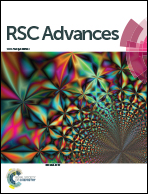Anti-biofilm properties of magnesium metal via alkaline pH
Abstract
Prevention of implant-associated infection (IAI) by inhibiting biofilm formation on implants is crucial to orthopedic surgery. In this work, the anti-biofilm activity of magnesium (Mg) is assessed using Pseudomonas aeruginosa (P. aeruginosa) and Staphylococcus epidermidis (S. epidermidis), two biofilm producing strains, in vitro, and using S. epidermidis in vivo. The effects of high Mg2+ concentration and alkaline pH on biofilm are evaluated in two separate experiments in vitro. Mg shows biofilm resistance proportional to the degradation of Mg in vitro, which is better than that of the corresponding alkaline pH, and high Mg2+ concentration has no such effect. Microbiological cultures and histological results demonstrate the ability of Mg against bacterial infection to reduce the risk of IAI in vivo. The results demonstrate that Mg prevents bacteria biofilm formation by high alkalinity at its surface rather than by high Mg2+ concentration, thus providing a promising new strategy for combating IAI.


 Please wait while we load your content...
Please wait while we load your content...